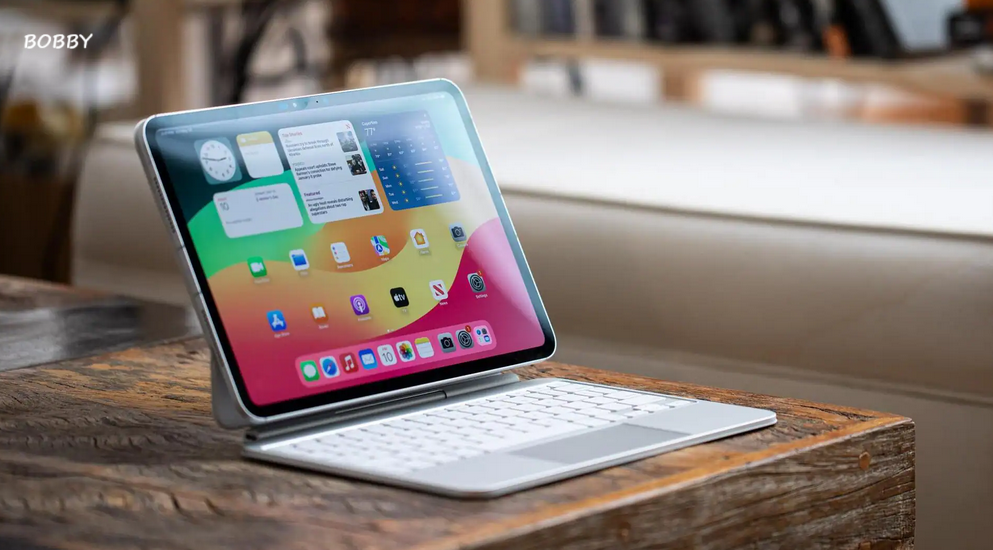Apple is reportedly preparing a major hardware evolution for its iPad Pro lineup, aiming to introduce a new vapor chamber cooling system as soon as 2027. This advanced thermal technology, already implemented in the latest iPhone 17 Pro models, marks Apple’s continued effort to push performance boundaries while keeping devices thin, silent, and efficient.
According to insiders familiar with Apple’s product plans, this next-generation cooling system will be part of a broader initiative to enhance the performance of Apple’s premium tablets and differentiate them more clearly from the iPad Air series.
A Step Toward More Powerful and Efficient Tablets
Apple’s current iPad Pro, powered by the M5 chip, already delivers near-desktop levels of power, capable of handling video editing, AI processing, and high-end gaming with ease. However, as chips become faster and more power-hungry, managing heat has become one of the most critical engineering challenges for thin mobile devices.
The vapor chamber cooling system works by spreading heat evenly across the internal surface, allowing the iPad to maintain optimal performance during heavy workloads without using fans. This design keeps the device cooler, quieter, and more reliable—ideal for professional users and creators who rely on sustained performance.
The M6 Chip and Apple’s 2-Nanometer Leap
The improved cooling system is expected to debut alongside the M6 processor, which may utilize TSMC’s next-generation 2-nanometer process. This breakthrough in semiconductor manufacturing will deliver greater power efficiency, higher speed, and improved AI processing capabilities.
Apple’s product roadmap indicates the new iPad Pro could arrive in spring 2027, consistent with the company’s 18-month hardware refresh cycle.
If these timelines hold, the 2027 iPad Pro will represent one of Apple’s most advanced mobile computing devices, likely targeting professionals who demand desktop-class capabilities in a portable form factor.
Differentiating the iPad Pro from the iPad Air
Over the past few years, Apple’s iPad Air has inched closer to the Pro lineup in terms of performance and features. The upcoming Air model, expected in 2026, will reportedly include a 13-inch display and the M4 chip—the same processor used in Apple’s 2024 MacBook Air models.
This narrowing performance gap has prompted Apple to redefine the iPad Pro’s identity as the flagship productivity tablet. By incorporating new cooling hardware, Apple can safely unleash the full potential of the M6 chip, offering performance levels that exceed what fanless tablets typically achieve.
Beyond performance, this strategy serves a marketing purpose: reinforcing the iPad Pro’s image as the ultimate tool for professionals, while positioning the iPad Air as a more affordable, mainstream option.
Apple Expands Its Advertising Strategy: Apple Maps Ads in 2026
In parallel with its hardware developments, Apple is also expanding its advertising business, introducing ads within its Maps app as soon as 2026.
The feature will allow businesses such as restaurants, retailers, and hotels to pay for priority placement in search results, much like App Store Search Ads. However, Apple reportedly plans a modernized interface for Maps ads, powered by AI-driven personalization to ensure users see the most relevant results.
This move underscores Apple’s growing interest in services and digital advertising, which have become increasingly important to its revenue stream. Currently, Apple runs ads across the App Store, Apple News, and Stocks apps.
While Maps ads represent a significant new opportunity for Apple’s advertising division, the company may face criticism from users who expect ad-free experiences on premium devices that cost up to $2,000 or more. Balancing monetization with user satisfaction will be key to the success of this initiative.
The Foldable iPad: Still Years Away
Meanwhile, Apple’s foldable iPad project remains under development but faces significant delays. Initially rumored for release in the late 2020s, reports now suggest the earliest possible launch could be in 2029.
Engineers have encountered technical challenges related to the device’s weight, mechanical durability, and the complexity of producing a large folding OLED display. The foldable iPad is rumored to feature an 18-inch screen, positioning it between a laptop and a tablet.
However, concerns remain about whether consumers would pay more than $3,000 for such a product. Internally, Apple executives are debating whether a foldable tablet can reach a wide enough audience to justify the cost and development time.
Competitors like Huawei have already released similar foldable laptop-tablet hybrids in China, showing there is interest in this category. Yet Apple’s cautious approach reflects its desire to perfect the user experience before entering the market—especially after shelving other ambitious projects like the autonomous car and the low-cost Vision headset.
Apple’s Strategic Direction: Refinement Over Reinvention
Taken together, these developments highlight Apple’s shift toward incremental innovation—focusing on improving the performance, efficiency, and user experience of existing product lines rather than launching entirely new ones.
The vapor chamber cooling system and M6 processor will likely make the iPad Pro an even more capable professional tool, pushing the boundaries of what a tablet can do. Meanwhile, Apple Maps ads will expand the company’s services ecosystem, tapping into new revenue sources.
Although the foldable iPad remains on hold, Apple’s long-term experimentation in this area demonstrates its continued exploration of next-generation form factors.
What to Expect by 2027
If Apple follows its current development schedule, consumers can expect the next iPad Pro to arrive in early 2027, featuring:
-
M6 processor built on a 2-nanometer TSMC process
-
Vapor chamber cooling system for sustained high performance
-
Improved display technology and potential AI-optimized workflows
-
Clearer performance gap between iPad Air and iPad Pro models
Simultaneously, Apple’s advertising platform will expand into Maps, marking a new phase in its digital ecosystem strategy, while foldable devices continue under research and development.
Conclusion
Apple’s next-generation iPad Pro represents the company’s ongoing mission to merge professional-grade performance with elegant, fanless design. By 2027, users could experience a tablet capable of delivering desktop-class power with advanced cooling and energy efficiency.
Alongside this hardware evolution, Apple’s expanding software and advertising initiatives show how the company continues to evolve—not just as a hardware innovator but as a comprehensive digital platform provider.
While a foldable iPad may still be years away, the innovations in Apple’s current roadmap make it clear that the company remains committed to pushing the limits of design, performance, and user experience well into the next decade.




